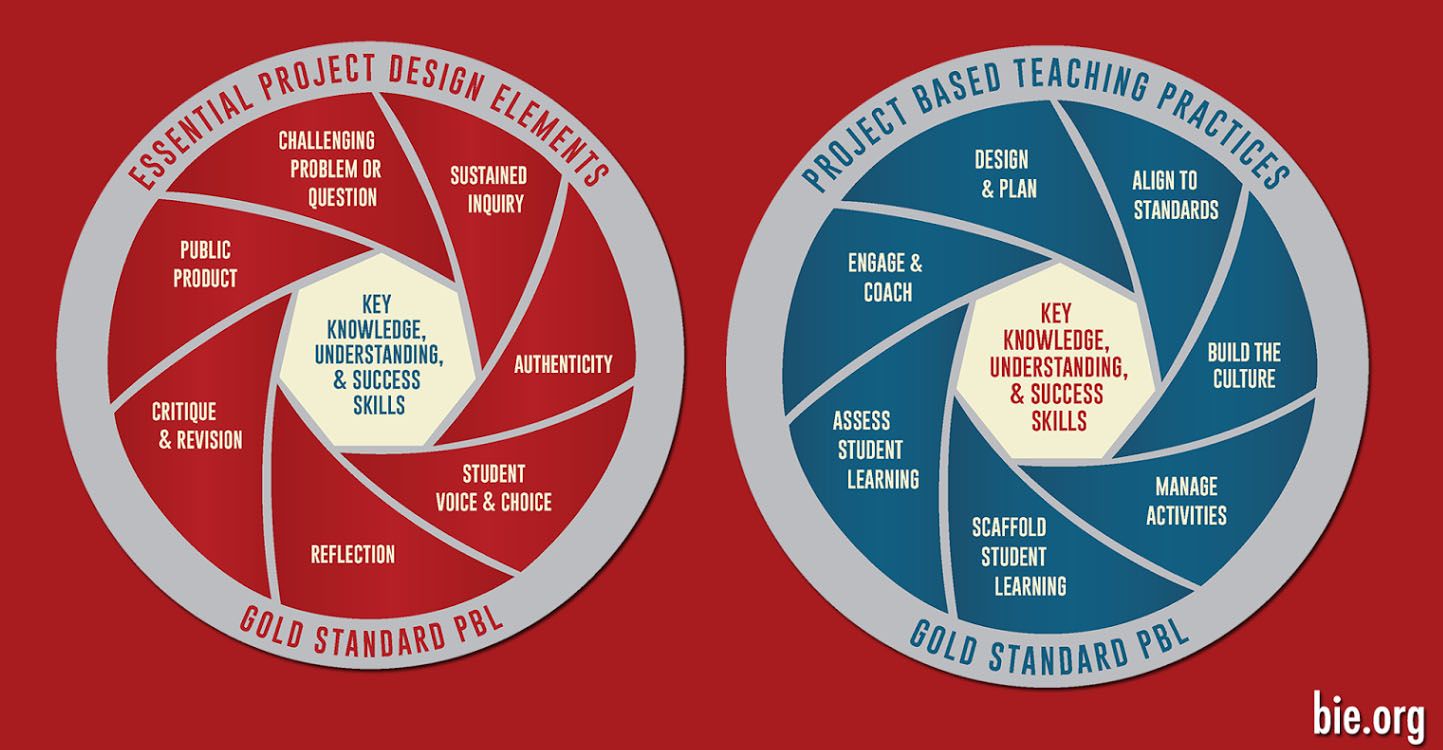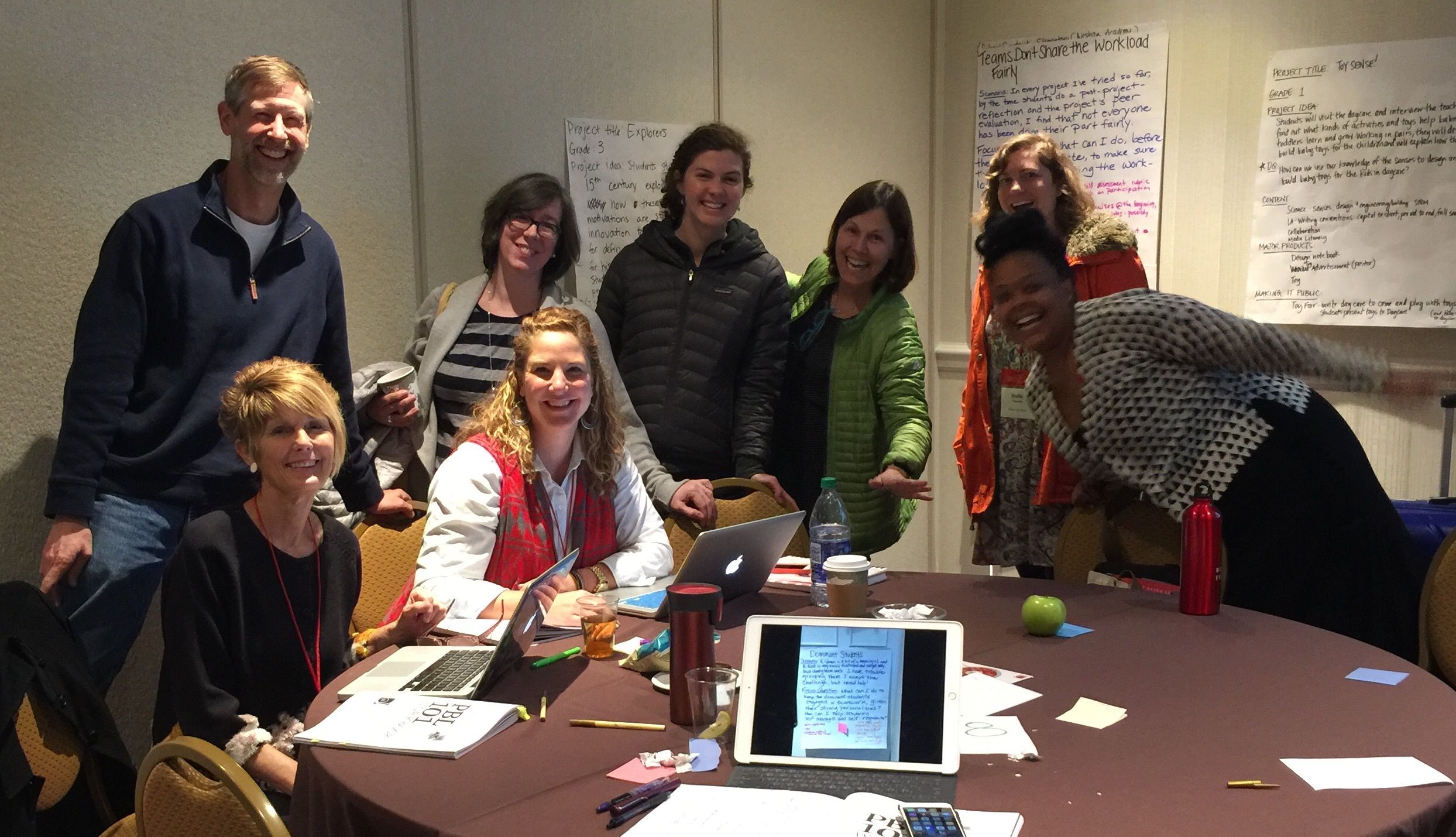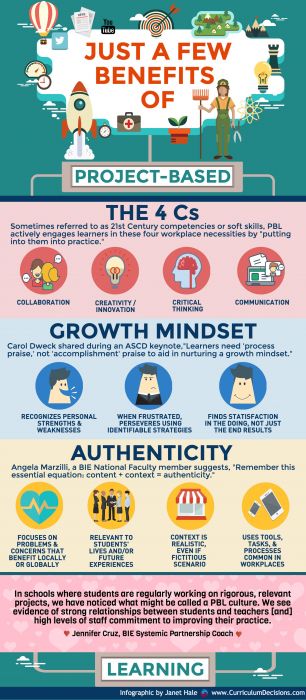
Project-Based Learning
Project Based Learning is a teaching method in which students gain knowledge and skills by working for
an extended period of time to investigate and respond to an engaging and complex question, problem, or challenge.
— Buck Institute of Education (BIE)
John Dewey, a leader in education in his day, who still influences educators today, conveyed that learning should not be just the acquisition of a rote set of skills. He believed that learning should be “the realization of one’s full potential and the ability to use those skills for the greater good.” Project Based Learning (PBL) provides an educational environment that creates meaningful contexts to apply both academic and success skills that embrace the application of caring about, and for, “the greater good.”
There are a variety of definitions and explanations pertaining to PBL. One model that Janet uses if a school or district does not already have a model or framework in place is the BIE Gold Standard Project Based Learning Model—both for designing project-based curriculum and developing and implementingproject-based instruction.

Janet enjoys working alongside educators to train, coach, and support them in designing project-based units that embrace quality design, such as the eight BIE Gold Standard PBL Essential Project Design Elements
- Key Knowledge, Understanding, and Success Skills – The project is focused on student learning goals, including standards-based content and skills such as critical thinking/problem solving, collaboration, and self-management.
-
Challenging Problem or Question – The project is framed by a meaningful problem to solve or a question to answer, at the appropriate level of challenge.
-
Sustained Inquiry – Students engage in a rigorous, extended process of asking questions, finding resources, and applying information.
-
Authenticity – The project features real-world context, tasks and tools, quality standards, or impact – or speaks to students’ personal concerns, interests, and issues in their lives.
-
Student Voice & Choice – Students make some decisions about the project, including how they work and what they create.
-
Reflection – Students and teachers reflect on learning, the effectiveness of their inquiry and project activities, the quality of student work, obstacles and how to overcome them.
-
Critique & Revision – Students give, receive, and use feedback to improve their process and products.
-
Public Product – Students make their project work public by explaining, displaying and/or presenting it to people beyond the classroom.
In tandem, Janet aids teachers in understanding, establishing, and improving their personal and collaborative PBL teaching capabilities. A useful tool to engage in this process is to focus on the eight characteristics of the BIE Gold Standard Project Based Teaching Practices:

-
Design & Plan
-
Align to Standards
-
Build the Culture
-
Manage Activities
-
Scaffold Student Learning
-
Assess Student Learning
- Engage & Coach
Janet believes that Project Based Learning has myriad student-centered advantages, includingsynthesizing the 4 C’s and a Growth Mindset with the Authenticity of quality PBL design characteristics.

In quality PBL design elements and teaching practices, teachers are expected to ensure alignment to standards, as well as scaffold learning and instructional practices. In John Larmer’s blog, “Gold Standard PBL: Align to Standards,” he summarizes a roundtable he facilitated with a few BIE faculty members wherein they focused on the need to ensure that PBL units are aligned to standards. He shares that Teresa noted,
“[A]ligning to standards might seem deceptively simple, but it really is an active process: essential for ensuring the project has rigor, as opposed to being ‘just a pet project’ that might be ‘fluffy.’”
Given Janet’s expertise in standards literacy and standards alignment, both systemically across grade levels and within a specific grade level, she works diligently to ensure that PBL-created units are appropriate for student learning expectations–both academically and maturationally.
Janet has had the pleasure of training and coaching teachers and administrators who are just beginning to design curriculum and instruction based on a Project Based Learning model, as well as those who are adjusting or upgrading their PBL understanding and
implementation.
To discuss your organization’s project-based learning needs, please complete a Curriculum Design Survey. Janet will respond within 24 hours.
To contact Janet directly, call her at 520.241.8797, or email her using this contact form.

